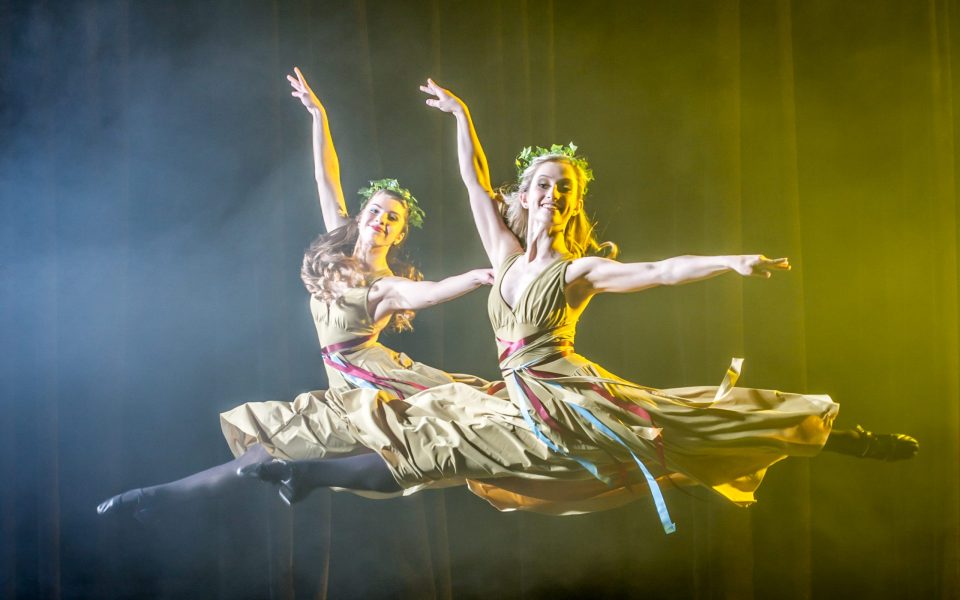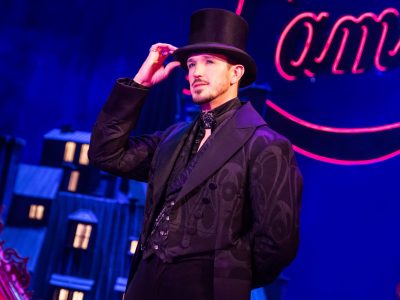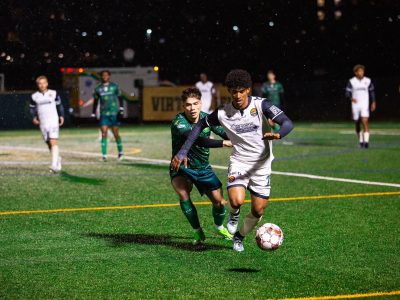by Sayaka Matsuoka
Multicolored strips of chiffon swirled left and right, changing hue with every passing beam of light. Graceful fairies with flowing hair danced with the lightness of fog upon a breeze, accompanied alluring music playing in the background. They circled a mossy tree centered on a stage cast in foggy green light.
Audience members huddled closely together under coats and umbrellas to escape the frigid rain and trudged through the doors of the High Point Theatre on March 19 to see a one-night performance of Celtic Legends, an original High Point Ballet production. The performance spanned three acts, each about a half-hour long, and played out the different tales of fantastical Irish characters like faeries and leprechauns set to both traditional and modern Irish music.
The first act opened with a colorful array of fairies and their queen, dressed in a shiny, sequined green gown as she glided across the stage. They danced spiritedly while captivating music that sounded like it was sung by an Irish Ellie Golding played in the background. As a group, they looked like a vibrant, moving watercolor painting; the individual dancers were stunning. Each movement was so precise and yet so graceful. They didn’t move — they flowed. They were like water.
Soon the opening act came to a close and the stage darkened. The background became black and two dancers appeared from the sides of the stage. Beams of soft light streamed from above, casting them in an “evening glow,” which was also the title of the sequence. They danced passionately to a slower instrumental piece, holding each other before breaking apart. The male dancer lifted his partner lightly, spinning her around and delicately releasing her to the ground again. They continued, engaging each other and at the same time engaging the audience with every step and leap. As the couple finished their routine, the slow, romantic movement led into a faster, more energized dance titled “Festival” that utilized more dancers. This time, tenor, alto and soprano voices melded in a beating harmony, directing the crew into an upbeat riverdance, the kind that you can’t help but tap your foot to.
This colorful transition starkly juxtaposed with the stripped-down duet that preceded it. The dancers moved in fast, circular movements, creating a whirlwind of colors; soon both the dancers and the music subsided as the first act closed and the curtain fell for the first intermission.
The second act opened with a cerulean background, complete with a full moon, flowers, chairs and white columns. The stage was set for a marriage, creating a livelier mood. As the women prepared for the wedding, the men arrived dressed in suits and pranced across the stage. This time, lyrical and folksy music played the words “Will you marry me?” while the dancers engaged in a more modern sequence. Soon, the women chased the men in a hilarious fiddle-driven dance that created a fun, energetic and festive vibe.
This most entertaining marriage act was followed by the final part which further delved into modern Irish music and dance with dancers clad in red and black attire. They danced in quick, rhythmic movements that seemed almost like salsa dancing. Like an army, they stomped and moved to dance club beats but with an Irish banjo creating the most dynamic out of the three acts.

Although the music guided the dancing, the technique and grace of the performers was what really shined through, particularly during the duets. They moved against muted backgrounds, limbs swaying with such precision and flexibility that seemed to defy nature. If the staging and the fantastical creatures weren’t enough to keep audiences engaged, the talented dancers would have done it.
Join the First Amendment Society, a membership that goes directly to funding TCB‘s newsroom.
We believe that reporting can save the world.
The TCB First Amendment Society recognizes the vital role of a free, unfettered press with a bundling of local experiences designed to build community, and unique engagements with our newsroom that will help you understand, and shape, local journalism’s critical role in uplifting the people in our cities.
All revenue goes directly into the newsroom as reporters’ salaries and freelance commissions.






Leave a Reply